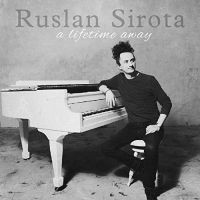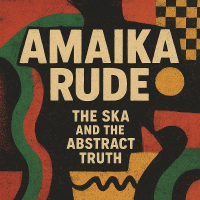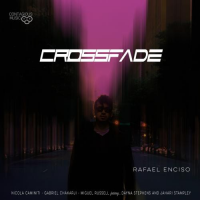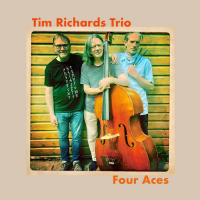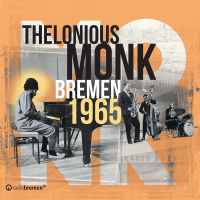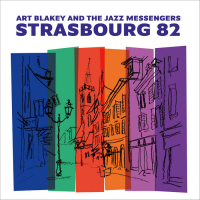Home » Jazz Articles » Album Review » King Crimson: In the Court of the Crimson King (50th Anniversary)
King Crimson: In the Court of the Crimson King (50th Anniversary)
While the answer might be debated (though it certainly seems possible), there's little doubt that the response to "Can music change the music world"? An unequivocal and resounding yes.
When it was released on October 10, 1969, In the Court of the Crimson King (An Observation by King Crimson) shook the world of music to its very foundation. Since then, beyond the legion of fans who discovered the album, either when it was first released or in the ensuing decades that have defined it as one of rock music's seminal recordings, a multiplicity of high praises has made clear just how groundbreaking and influential this five-song, 44-minute album was, and remains to this day. All this from a group of relatively unknown (but already quite experienced) musicians who somehow managed to emerge, fully formed and mature.
The Who's Pete Townshend called it "an uncanny masterpiece." Psychedelic pop star Donovan felt that King Crimson was the best band since The Beatles. Early fans of the group's paradoxically incendiary and elegant live sets, with relatively inexpensive but effective lighting from the band's lyricist, Pete Sinfield, included members of The Moody Blues and Yes (including future Crim-to-be drummer Bill Bruford), future Genesis guitarist Steve Hackett, future Crimson reed/woodwind multiinstrumentalist Mel Collins...even Pink Floyd's keyboardist, Richard Wright. John Gaydon, who would, alongside David Enthoven, quickly become King Crimson's first managers, recalls: "Music like that didn't exist, really." And, in 2015, Rolling Stone Magazine named In the Court of the Crimson King the greatest progressive rock album of all time, second only to Pink Floyd's The Dark Side of the Moon (Harvest, 1973).
In the Court of the Crimson King's reputation in the progressive rock arena has ultimately become something of an albatross around the shoulders of subsequent incarnations right up to the current seven-piece, three-drummer lineup that is the first to properly do justice to the group's entire fifty-year, thirteen commercial album history, understandably preferring to avoid what has increasingly become a reductionist label. But it's important to remember that when King Crimson first emerged from the quirkier trio Giles, Giles & Fripp, which released The Cheerful Insanity of Giles, Giles & Fripp (Deram) in 1969) and achieved the most remarkable sales figure of six hundred worldwide, progressive rock wasn't a cemented genre defined, now, by a number of very specific cornerstones. It meant something else entirely, and included many groups that would now be considered anything but "progressive rock."
In 1969, it was the term "progressive" that defined progressive rock (a better label, if there must be one: progressive music), an inclusionary genre that brought together elements of jazz, classical, folk and other music into a largely rock context, often played by musicians with formal training and/or experience in other genres, and in ways that were utterly different, group to group. Sure, the Moody Blues also used the tape loop-driven mellotron, an instrument that allowed a keyboardist to deliver symphony sounds ranging from string sections to woodwinds and choirs. But that group's leanings were far more driven by a pop music and, with its early classic lineup, psychedelic sensibilities. Procol Harum relied on real orchestras to help it achieve its cross-blend of symphonic leanings, classical influences and blues-rock tendencies. Fairport Convention electrified and expanded upon traditional British folk music with original material that often felt as if it was as old as the jigs, reels and other antediluvian forms from which the band drew. But all three were considered, at the time, to be progressive rock bands, despite differing far more than they intersected.
Even at a time when a great many bands were stretching the boundaries of what rock music could be, King Crimson was an altogether different beast. From the first moments of the disturbing, wind-driven sonics that introduce In the Court of the Crimson King's opening "21st Century Schizoid Man," it's clear that something different is afoot. A nightmarish but powerfully virtuosic track with shifting meters, "21st Century Schizoid Man" innovatively blends harshly effected vocals and electronically treated cymbals with crunching, massively overdriven guitar chords and one of rock music's truly iconic, instantly recognized opening themes. But it's also infused with no shortage of jazz proclivities, from the swinging middle section, support by bassist (and vocalist) Greg Lake and drummer Michael Giles' fluid underpinning, to keyboardist/saxophonist Ian McDonald's frenetically overdubbed horn solo and the very first Fripp solo to feature a signature sound so silkily and infinitely sustaining that it's long been imitated but rarely copied.
After the band moved from its aborted early sessions at Morgan Studios to the larger (and less expensive) Wessex Studios, and its young, relatively inexperienced band members made the decision to produce themselves rather than using an outside producer (The Moody Blues' Tony Clarke), King Crimson was subsequently afforded the freedom to readily indulge both its penchant for in-the-moment spontaneity and use of the studio as an additional band member. Still, that the basic tracks for "21st Century Schizoid Man" were recorded in just one incendiary live take is nothing shy of remarkable.
"21st Century Schizoid Man" is an episodic piece of jazz-infused rock writing that also includes a lengthy, mind-bogglingly complex and labyrinthine passage, played at light speed by the entire group before a quick return to high velocity swing and leading to the song's final verse and a chaotic, cacophonous ending that simply did not exist before in rock music of any persuasion.
Furthermore, it may have been the opening salvo to an album that would ultimately redefine what rock music—any music—could be, but it was also most deceptive, suggesting something other than what would ultimately unfold on this stylistically expansive recording. Instead of more high energy, metal-leaning displays of stunning virtuosity, In the Court of the Crimson King continued, next, with a lovely pastoral ballad ("I Talk to the Wind"), featuring McDonald's lyrical flute work and Fripp's best Wes Montgomery-informed, warm-toned octaves, in addition to Lake's most gently expressive singing. His bass playing, combined with Giles' inimitable snare and overall creative kit work, also demonstrated a group as nuanced and subtle as it could be hard-hitting and gymnastic.
But even these two pieces fail to provide a proper indication of what's to come, even if the sum total of In the Court of the Crimson King evokes a surprisingly connected narrative and group identity. "Epitaph" is a darker (and still topically relevant) piece, blending symphonic tendencies with reverb-drenched acoustic guitars and utterly inventive and distinctive drumming, both Fripp and Giles (not to mention Lake and McDonald) informing and inspiring generations of musicians to come. Another ballad, "Moonchild," is more melancholy and, after just a couple of minutes, opens into a ten-minute, freely improvised passage that combines Ian McDonald's Baldwin Electric Harpsichord Vibraphone and Fripp's again-warm and jazz-inflected tone (but, this time, imbued with both lyricism and greater harmonic angularities) with responsive work that would foreshadow the drummer's later free jazz explorations in the Michael Giles MAD Band.
"The Court of the Crimson King," with its indigo verses, memorable, mellotron-heavy choruses and some of Pete Sinfield's most elegant prose, brings In the Court of the Crimson King to a close with a curious coda that begins with a circus-like pipe organ timbre, only to ultimately reiterate the song's compelling chorus many times over, before ending with chaos similar to the end of "21st Century Schizoid Man" and, thus, bringing the album full circle.
Much has already been written about this album at All About Jazz, including the 2005 Original Master Edition (DGM Live) that, for the first time, released the album on CD using the (recently found) original master tapes, to 2009's 40th Anniversary Series (Panegyric), amongst the first of a series of reissues of Crimson's original catalog that have been largely remixed, in stereo and surround sound, by Steven Wilson (and largely in collaboration with Fripp).
With stereo and surround remixes already released just a decade ago (and so much already written about In the Court of the Crimson King), perhaps the most obvious question about In the Court of the Crimson King (50th Anniversary), a collection of three CDs and one Blu Ray, is: why?
Well, for one thing, attaining Gold Anniversary status on October 10, 2019, In the Court of the Crimson King deserves some kind of celebration as the album that not only shook the music world, but represented the beginning of a group (and its multitude of innovations) that would break up and reform, in different configurations, more times than many, yet remain to this very day, having recently completed its sixth year of touring since returning to active duty in 2013.
The current lineup delivers both new and archival material, treating both as something to be rendered fresh and new each and every night, and adds new examples of both with every subsequent tour. King Crimson's current three-drummer front line and a four-piece back line, featuring two guitarists, a bassist/stick player and a reed/woodwind multiinstrumentalist, is also capable, collectively, of bringing up to five keyboardists to bear. All of this ensures that the music remains both relevant and forward-reaching, with King Crimson anything but a "legacy" band that largely focuses on its most popular material, often many decades passed.
A larger box set is coming, in 2020, also released by Panegyric, that will render the 2009 five-CD/one-DVD In the Court of the Crimson King (40th Anniversary) box set (and more budget-friendly single CD/DVD and two-CD excerpts) largely superfluous. Still, for those looking to get something that fits between the 2019 collection and pending 2020 mega box set, featuring Steven Wilson's 2019 stereo and surround remixes of the album plus far more bonus material than found on the smaller 2009 CD/DVD and two-CD sets, this three-CD/Blu Ray In the Court of the Crimson King (50th Anniversary) will, most certainly, fit the bill.
With In the Court of the Crimson King (40th Anniversary) representing one of Wilson's first remixes, the opportunity to apply many lessons learned since then and improve upon it was clearly a compelling idea. It was also an opportunity for Wilson to include strictly instrumental mixes, as has become an increasing habit of his with various remixed reissues. And while In the Court of the Crimson King's heavy emphasis on instrumental work might seem to make separate instrumental mixes redundant, the truth is that there are more than enough vocal passages that, when removed, reveal even more about the music supporting them.
Beyond the new full and instrumental mixes—the full recording also restoring Wilson's 40th Anniversary edit of "Moonchild" from nine minutes back to the original recording's twelve—this three-CD/Blu Ray set also duplicates much of the 40th Anniversary's bonus material (with Wilson's instrumental version only containing a two-and-a-half-minute edit of the vocal section for "Moonchild"), though there are changes to some of it, as well as some newly found and/or included takes.
Wilson has not only remixed the original album; he's also remixed much of the bonus material that he'd initially mixed in 2009. With the bonus material only available in stereo, it's also included in the higher, 24-bit/96KHz resolution afforded by Blu Ray's much greater storage capacity, rather than the 24/48 PCM stereo versions included on the 40th Anniversary's DVD. And with three CDs, there's more of the bonus material in that format, beyond the 50th Anniversary mixes and Original Master Edition of the original mix.
But it's the Blu Ray disc that features, in addition to everything on the CDs, even more bonus material: some already heard on the 40th Anniversary, but some collected here (or altered into something else) for the first time.
The instrumental Morgan Studios version of "21st Century Schizoid Man," originally included on the 40th Anniversary edition, now spans King Crimson's entire fifty-year existence, with the addition of newly overdubbed parts from two current Crimson members in addition to the insertion of Greg Lake's original Wessex Studios vocals, originally from July/August 1969, into this take recorded two months prior.
Guitarist/vocalist Jakko M. Jakszyk layers a second, fluidly engaged guitar solo over Fripp's original, as does saxophonist Mel Collins over McDonald's. With Lake's vocals now included, what was once an instrumental take of archival interest only becomes a more complete, standalone alternative. Mixed by longtime manager and producer David Singleton, this enhanced version of the considerably less impressive Morgan Studios take becomes a far more persuasive alternative to the Wessex version ultimately used on the record (and which still remains definitive).
The alternate Wilson mix of "I Talk to the Wind," beyond being remixed in 2019, is largely the same as the 40th Anniversary bonus track, but with another 30 seconds added before the fade-out; in addition to an alternate flute solo from McDonald, this take also includes a supremely jazz-centric closing solo from Fripp that, this time, eschews the Wes Montgomery octaves of his mid-section solo and, instead, sounds more informed by Jim Hall's linear simplicity and plectrum use.
More significant, however, is the duo version (with overdubs) included on the 40th Anniversary edition, which features flautist McDonald, and Fripp, this time on acoustic steel-string guitar. The mix included on the 40th clocks in at just under five minutes, while the full-length version of the same take included on the 50th is over two minutes longer. While still fading out, this extended version of the same take adds Fripp's lovely arpeggiations and crystalline melodies to the lengthy closing section, coupled with McDonald's more expansively harmonized flute lines as the two engage more fully and at greater length. Beyond presenting an alternate possibility of a song whose ultimate arrangement remains, again, the definitive one, this look at "I Talk to the Wind" further demonstrates McDonald and Fripp's improvisational acumen.
The Morgan Studios version of "The Court of the Crimson King," here again remixed by Wilson, is an intriguing version that, barring McDonald's flute solo, is largely a trio take, with only acoustic guitar, electric bass and drums. It's a significantly different look at a song so strongly defined by McDonald's mellotron and other keyboards. The trio version of "21st Century Schizoid Man," included here with a new Wilson stereo mix, may say "alternate take," but with Fripp's solo intact from the version used on the album and other important makers, it sounds more like the original version without overdubs and featuring only Fripp, Lake (on electric bass with no vocals) and Giles.
Wilson's revised stereo mix of the studio run-through of "I Talk to the Wind" is nine seconds shorter than his mix of the same version on the 40th Anniversary, but that's only because he cuts the end of the run-through, which ends before the song's closing solos, by a few seconds of silence originally at the end. Both begin with a cut into the chorus and feature only McDonald on flute (but with no overdubs), supported by Lake and Giles; but, like many of the instrumental versions heard across the three CDs and Blu Ray, it really serves to demonstrate just how innovative Giles' approach to drums was. A version of "Epitaph," mixed by Singleton and largely soloing Lake's vocals (with occasionally added instrumentation only there for context) demonstrates just how strong a singer he was, even at the age of 21.
In 1969, Lake was the youngest member of the band, with Fripp and McDonald 23, "hippy poet" Sinfield 25 and Giles the elder, at 27. Everyone had been plying their craft for some time, though beyond The Cheerful Insanity of Giles, Giles & Fripp's impressive sales of 600 units worldwide, none of them were particularly well-known. McDonald began playing with Giles, Giles & Fripp, which ultimately led to the formation of King Crimson, with the replacement of bassist Peter Giles (two years younger than his drummer brother) by Lake, whose primary raison d"être with Crimson was his skill as a vocalist, and who was originally a guitarist before Fripp offered him the job as Crimson's bassist and lead vocalist.
It's hard to imagine that a group of musicians with such little worldly experience in the music industry could arrive so fully formed, or that King Crimson's first lineup would last for such a short period of time—less than a year. Formed in '68 but not formally beginning rehearsals until January 1969, the band's debut was recorded (following the June, 1969 false start at Morgan Studios) at Wessex Studios, commencing on the same day that Americans were walking on the moon, and wrapping up overdubs and mixing the following month. With its live shows already creating a huge buzz, some pretty fierce label competition to release In the Court of the Crimson King led to Island issuing it in the UK and Atlantic contracted for the North American release, on October 10, 1969 in the U.K., and early the following month in North America. The band toured North America from October 30 through December 14, when Giles and McDonald promptly quit the band after realizing that the road was not for them.
And so, King Crimson's first lineup formed, recorded, released, toured and broke up all in the seminal year of 1969, when it seemed that so many important bands and records were emerging. With Lake leaving what was left of the band in early 1970 to join Emerson, Lake & Palmer, Fripp and Sinfield soldiered on, releasing three important (but, in the case of the first two, impossible to tour) albums—1970's In the Wake of Poseidon and Lizard; and 1971's Islands—before finally cementing a lineup long enough to recommence touring in the spring of 1971.
But that's another story for another day, documented elsewhere in All About Jazz articles like Sailors' Tales 1970-1972 and, of course, in Crimson scribe Sid Smith's soon-to-be-released Panegyric revision and expansion to his exceptional 2000 bio, In the Court of King Crimson (Heller Skelter, 2001; revision/reissue Panegyric, 2019).
Suffice to say, for those who either didn't bite on the six-disc In the Court of the Crimson King (40th Anniversary) box set or its two-CD and/or CD/DVD brethren, that the three-CD/Blu Ray In the Court of the Crimson King (50th Anniversary) will more than fill in the many blanks left by past releases. Those who own the six-disc box may want to wait (if they can, that is) until the more complete, larger 1969 box is released next year. Still, while this three-CD/Blu Ray 50th Anniversary edition crosses over considerably, content-wise, with the 40th Anniversary, there are enough changes and new material to encourage giving it a listen. And with all of the material Wilson remixed in 2009 freshly remixed in 2019 and at a higher resolution, if the differences are subtle, they are there, in particular Wilson having created new mixes that are slightly more faithful to the original.
For those who own either one or both of the 40th Anniversary smaller issues, previous, album-only versions or don't own the album in any form, this three-CD/Blu Ray edition of In the Court of the Crimson King (50th Anniversary) provides both original and updated mixes, along with enough bonus material from the Morgan and Wessex sessions as to open a sizable window into the process of making such a significant album.
Without a surround sound system, it's impossible to assess Wilson's new surround mix. Still, despite the content overlaps with the 40th Anniversary editions, Wilson's updated stereo remixes (all mixes approved by Fripp) are that extra bit clearer, cleaner, warmer and dynamic, with his usual increased delineation to the multitude of instrumental and vocal layers. Again, subtle, but there.
With new bonus material plus the availability of everything on the three CDs and more on the Blu Ray disc (and in higher resolution than ever before), this smaller version of In the Court of the Crimson King (50th Anniversary) easily eclipses all prior versions, more fully documenting a band that seemed to emerge out of nowhere...and, just as quickly, disappeared into the ether once again.
King Crimson's 50-year, on-again/off-again existence continued (and still continues) to push musical boundaries in different but equally important ways. But it all began here, in 1969, with In the Court of the Crimson King, a still remarkably relevant recording that, with this 50th Anniversary edition of an undisputed classic, is an essential listen and, even more, experience for anyone wanting to hear one way how rock music got from there to here...and how music might, indeed, change the world.
Track Listing
CD1 (2019 stereo & instrumental stereo Steven Wilson mixes): 21st Century Schizoid
Man; I Talk to the Wind; Epitaph; Moonchild; The Court of the Crimson King; 21st Century Schizoid
Man (instrumental); I Talk to the Wind (instrumental); Epitaph (instrumental); Moonchild (edit)
(instrumental); The Court of the Crimson King (instrumental).
CD2 Alternate Album, Expanded Edition): Wind Session (2019 SW stereo
mix): 21st Century Schizoid Man (Morgan Studios June 1969 take with Greg Lake vocal overdubs
from Wessex, August 1969, and Mel Collins & Jakko Jakszyk August 2019 overdubs, 2019 David
Singleton mix); I Talk to the Wind (alternate 2019 Steven Wilson mix); I Talk to the Wind (duo
version, full length master, 2019 SW mix); Epitaph (vocals isolated/highlighted, 2019 DS mix);
Epitaph (alternate take, 2019 SW mix); Moonchild (take 1, 2019 SW mix); The Court of the Crimson
King (Morgan Studios, June 1969 take, 2019 SW mix): 21st Century Schizoid Man (trio version, 2019
SW mix).
CD3 (Original Master Edition, Expanded): 21st Century Schizoid Man
(Original Master Edition, Simon Heyworth master); I Talk to the Wind (Original Master Edition, SH
master); Epitaph (Original Master Edition, SH master); Moonchild (Original Master Edition, SH
master); The Court of the Crimson King (Original Master Edition, SH master); 21st Century Schizoid
Man (Morgan Studios instrumental take, 1969); I Talk to the Wind (studio run through, 2019 Steven
Wilson mix); Epitaph (backing track, 2019 SW mix); The Court of the Crimson King (take 3, 2009 SW
mix).
Blu Ray:
2019 Steven Wilson 5.1 and Stereo Mixes, DTS-HD MA and LPCM 5.1, DTS-HD MA and
LPCM Stereo 24/96 ): 21st Century Schizoid Man; I Talk to the Wind; Epitaph; Moonchild; The
Court of the Crimson King; I Talk to the Wind (duo version)
2019 Steven Wilson 5.1 and Stereo Instrumental Mixes, DTS-HD MA and LPCM 5.1, DTS-
HD MA and LPCM Stereo 24/96: 21st Century Schizoid Man; I Talk to the Wind; Epitaph;
Moonchild; The Court of the Crimson King.
Original Master Edition, DTS-HD MA and Stereo 24/96: 21st Century Schizoid
Man; I Talk to the Wind; Epitaph; Moonchild; The Court of the Crimson King.
Alternate Album, DTS-HD MA and Stereo 24/96: 21st Century Schizoid Man
(Morgan Studios June 1969 take with Greg Lake vocal overdubs from Wessex, August 1969, and Mel
Collins & Jakko Jakszyk August 2019 overdubs, 2019 David Singleton mix); I Talk to the Wind
(alternate 2019 Steven Wilson mix); I Talk to the Wind (duo version, full length master, 2019 SW
mix); Epitaph (vocals isolated/highlighted, 2019 DS mix); Epitaph (alternate take, 2019 SW mix);
Moonchild (take 1, 2019 SW mix); The Court of the Crimson King (Morgan Studios, June 1969 take,
2019 SW mix).
Additional Material, DTS-HD MA and Stereo 24/96: Wind Session (2019 SW stereo
mix); 21st Century Schizoid Man (trio version, 2019 SW mix): I Talk to the Wind (studio run through,
2019 SW mix); Epitaph (backing track, 2019 SW mix); Moonchild (album edit, 2009 SW & mix); The
Court of the Crimson King (take 3, 2009 SW mix); 21st Century Schizoid Man (Morgan Studios take,
June 1969, KC mix); The Court of the Crimson King (part 1) (mono single a side, 1969, KC mix); The
Court of the Crimson King (part 2) (mono single b side, 1969, KC mix).
Video: 21st Century Schizoid Man (extract Hyde Park, July 5, 1969, SW mix).
Personnel
King Crimson
band / ensemble / orchestraRobert Fripp: electric and acoustic guitars; Ian McDonald: (saxophone, flute, clarinet, bass clarinet), keyboards (Mellotron, harpsichord, piano, organ), vibraphone, backing vocals; Greg Lake: bass guitar, lead vocals; Michael Giles: drums, percussion, backing vocals; Pete Sinfield: lyrics, illumination; Mel Collins: saxophone (Blu Ray Alternate Album#1, CD2#2); Jakko Jakszyk: guitar (Blu Ray Alternate Album#1, CD2 #2).
Album information
Title: In the Court of the Crimson King (50th Anniversary) | Year Released: 2019 | Record Label: Panegyric Recordings
Tags
About King Crimson
Instrument: Band / ensemble / orchestra
PREVIOUS / NEXT
Support All About Jazz
 All About Jazz has been a pillar of jazz since 1995, championing it as an art form and, more importantly, supporting the musicians who make it. Our enduring commitment has made "AAJ" one of the most culturally important websites of its kind, read by hundreds of thousands of fans, musicians and industry figures every month.
All About Jazz has been a pillar of jazz since 1995, championing it as an art form and, more importantly, supporting the musicians who make it. Our enduring commitment has made "AAJ" one of the most culturally important websites of its kind, read by hundreds of thousands of fans, musicians and industry figures every month.




